
- Home
- Travel Packages
- Top Destination
-
Travel Attraction
By Category
Top Attraction

- Travel Agents
- Car Rentals
- Hotels
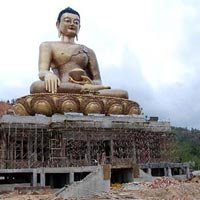
Largest and the capital city of the Kingdom of Bhutan, Thimphu is in its transformational phase, moving towards modernization. But in no way does this imply that the valley has lost its natural charm or shed off the country's ideals of natural conservatism. As the political, economic and cultural focal point of the kingdom, this city has several places for tourists to stop by. Apart from the monasteries dotting its landscape, there are many restaurants, bars and cafes as well to offer you a leisurely time. The best way to explore the intriguing beauty of Bhutan is to strike a balance in your itinerary between the old and the new. You can travel around numerous religious places like the National Memorial Chorten, explore the kingdom’s past at the museums or simply relax in the exotic parks and preserves. Other ways to recreate here would be to shop for handicrafts and gorge on sumptuous Bhutanese delicacies.
Explore More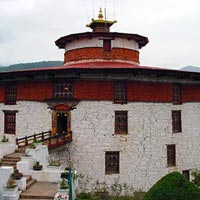
A small but significant town in the south west of Bhutan, Paro houses the kingdom’s only international airport. Its significance as one of the most sacred lands for Buddhists is commemorated by Taktshang Monastery (Tiger’s Nest), the place where Guru Rinpoche, father of Bhutanese Buddhism is believed to have landed on the back of a tigress. Several ancient temples and monasteries (about 150 in total) situated here have interesting stories of their own to narrate. The town is nestled amidst the bewitching beauty of Paro Valley, on the banks of Paro Chhu. Its bazaars are brimming with colorfully painted shops and restaurants, where you can go for an evening stroll. Only an hour or two on foot and you would have explored every nook and corner of this place. For those who wish to be close to nature, this sparsely populated town is the best of what Bhutan has to offer. If you are coming to this kingdom, leaving out Paro from your itinerary is not even an option.
Explore More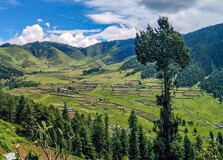
Wangdue Phodrang is a district in central Bhutan. It is named after its main town, Wangdue Phodrang, which is home to Wangdue Phodrang Dzong, a large Bhutanese fortress and monastery located picturesquely next to the Punakha Chhu river.
Explore More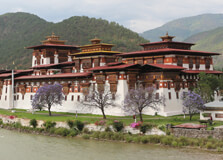
Punakha, a serene valley town in western Bhutan, is steeped in history and natural beauty. Once the capital of Bhutan until 1955, it remains the winter residence of the central monastic body due to its temperate climate. Nestled at the confluence of the Pho Chhu and Mo Chhu rivers, Punakha is renowned for its lush landscapes, terraced rice fields, and vibrant jacaranda blooms in spring. The town’s crown jewel is the majestic Punakha Dzong, an architectural masterpiece built in 1637. It is one of Bhutan’s most iconic and picturesque fortresses, serving both religious and administrative functions. The dzong hosts important annual festivals like Punakha Drubchen and Punakha Tshechu, which showcase traditional mask dances and rituals. Beyond its cultural significance, Punakha offers adventure and tranquility. Visitors can enjoy white-water rafting, hike to the scenic Khamsum Yulley Namgyal Chorten, or stroll across the longest suspension bridge in Bhutan. The valley’s gentle climate and fertile soil make it ideal for agriculture, especially rice cultivation. Punakha embodies Bhutan’s harmonious blend of spirituality, tradition, and nature. Whether you're drawn by its historical depth or its peaceful charm, Punakha offers a captivating glimpse into the soul of Bhutan.
Explore More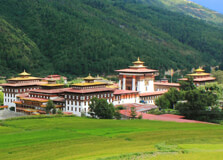
Bumthang, located in central Bhutan, is a region of profound spiritual and historical significance. Comprising four picturesque valleys—Chokhor, Tang, Ura, and Chhume—it is often referred to as the cultural heartland of the country. The area is dotted with ancient temples, monasteries, and sacred sites, many of which date back to the 7th century. Notable landmarks include Jambay Lhakhang, Kurjey Lhakhang, and Tamshing Monastery, each steeped in legend and revered by Bhutanese Buddhists. Bumthang’s landscape is a harmonious blend of rolling hills, alpine meadows, and fertile farmland, known for producing apples, buckwheat, and honey. The region hosts vibrant festivals such as Jambay Lhakhang Drup and Ura Yakchoe, which feature traditional mask dances and spiritual rituals that attract both locals and tourists. With its tranquil beauty, rich heritage, and deep spiritual atmosphere, Bumthang offers an immersive experience into Bhutan’s soul, making it a must-visit destination for cultural explorers
Explore More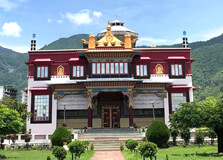
Phuntsholing, a bustling border town in southwestern Bhutan, serves as the gateway between Bhutan and India, adjoining the Indian town of Jaigaon. Unlike Bhutan’s serene highland towns, Phuntsholing is a vibrant commercial hub, blending Bhutanese and Indian cultures in a dynamic urban setting. It plays a crucial role in trade and transit, making it one of the most economically active regions in the country. The town’s architecture and atmosphere reflect a unique fusion of tradition and modernity. Key attractions include the ornate Zangto Pelri Lhakhang, a temple dedicated to Guru Rinpoche, and the nearby Amo Chhu Crocodile Breeding Centre. Phuntsholing’s warm, humid climate contrasts with Bhutan’s cooler interior, offering a different experience for travelers. As the first stop for many entering Bhutan by road, Phuntsholing provides a fascinating introduction to the kingdom’s culture, hospitality, and administrative processes, including immigration and permits for further travel into Bhutan.
Explore More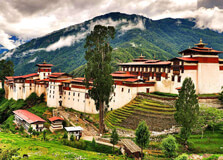
Trongsa, located in central Bhutan, is a historically significant town that serves as a vital link between the east and west of the country. Perched on a steep ridge, it offers panoramic views of deep valleys and forested hills, making it one of Bhutan’s most scenic destinations. Trongsa is best known for the imposing Trongsa Dzong, the largest fortress in Bhutan, which dominates the landscape and has played a crucial role in the nation’s political history. It was once the seat of power for Bhutan’s royal family, and every king served as the Trongsa Penlop before ascending the throne. The town’s rich heritage is complemented by its spiritual atmosphere, with several ancient temples and monasteries scattered throughout the region. Trongsa also hosts the vibrant Trongsa Tshechu festival, featuring traditional mask dances and rituals. With its blend of history, culture, and breathtaking scenery, Trongsa offers a deep and authentic Bhutanese experience.
Explore More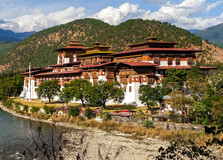
Phuentsholing, located in southwestern Bhutan, is a vibrant border town that serves as the primary gateway between Bhutan and India. Adjacent to the Indian town of Jaigaon, it plays a crucial role in trade, commerce, and cross-border travel. Unlike Bhutan’s highland towns, Phuentsholing has a subtropical climate, offering a warm and humid atmosphere year-round. The town reflects a unique blend of Bhutanese and Indian cultures, evident in its architecture, cuisine, and daily life. Key attractions include the Zangto Pelri Lhakhang, a serene temple dedicated to Guru Rinpoche, and the Amo Chhu Crocodile Breeding Centre, which draws nature enthusiasts. Phuentsholing is also the administrative hub for immigration and permits for travelers entering Bhutan by road. With its bustling markets, diverse population, and strategic location, Phuentsholing offers a dynamic contrast to Bhutan’s tranquil interior. It’s often the first impression of Bhutan for visitors, combining modern energy with cultural charm
Explore More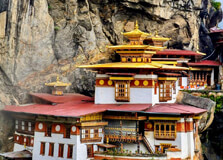
Mongar, located in eastern Bhutan, is a charming hill town known for its scenic beauty, vibrant culture, and growing modernity. Perched on a gentle slope, it offers sweeping views of forested mountains and deep valleys, making it a picturesque stop for travelers exploring eastern Bhutan. Mongar serves as a vital administrative and commercial center, blending traditional Bhutanese architecture with contemporary development. The town is famous for the Mongar Dzong, a relatively new fortress built in the 20th century that showcases traditional design without using nails. It hosts the lively Mongar Tshechu festival, where locals gather to celebrate with mask dances and spiritual rituals. The region is also known for its skilled wood and stone carvers, contributing to Bhutan’s rich artistic heritage. Surrounded by subtropical forests and terraced fields, Mongar offers a peaceful yet dynamic atmosphere. It’s a gateway to eastern Bhutan’s cultural depth and natural splendor, ideal for immersive travel experiences
Explore More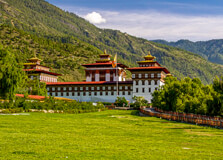
Trashigang, located in eastern Bhutan, is one of the country’s largest and most remote districts, known for its dramatic landscapes and rich cultural heritage. Perched on a hillside overlooking the Drangme Chhu River, the town serves as a vital administrative and trading center for the eastern region. Despite its rugged terrain, Trashigang is a lively hub connecting highland villages and lowland settlements. The iconic Trashigang Dzong, built in the 17th century, stands as a symbol of the region’s historical and spiritual significance. It hosts the vibrant Trashigang Tshechu, a festival featuring traditional mask dances and religious rituals that draw crowds from surrounding areas. The district is also home to several ethnic groups, including the Brokpa semi-nomads of Merak and Sakteng, known for their unique customs and yak-herding lifestyle. With its blend of cultural diversity, scenic beauty, and spiritual depth, Trashigang offers a captivating window into Bhutan’s eastern traditions
Explore More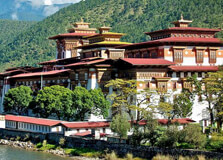
Chukha, located in southwestern Bhutan, is a vital district known for its economic significance and lush, mountainous terrain. It serves as a key industrial hub, home to the Chukha Hydropower Project—Bhutan’s first major hydroelectric plant—which plays a crucial role in the country’s energy production and exports to India. The district’s strategic location near the Indian border facilitates trade and connectivity, especially through the town of Phuentsholing, which lies within Chukha. Beyond its industrial importance, Chukha boasts rich biodiversity, with dense forests, rivers, and varied wildlife. The region’s subtropical climate supports agriculture, including cardamom and citrus cultivation. While it’s less frequented by tourists compared to Bhutan’s cultural heartlands, Chukha offers scenic drives, serene landscapes, and glimpses into Bhutan’s development journey. With its blend of natural beauty, economic vitality, and cross-border relevance, Chukha stands as a dynamic district that bridges Bhutan’s traditional values with modern progress.
Explore More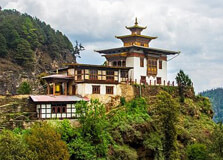
Samdrup Jongkhar, situated in southeastern Bhutan, is a bustling border town that connects Bhutan with the Indian state of Assam. As one of the country’s oldest trading posts, it plays a vital role in commerce and transportation, serving as a gateway for goods and travelers entering eastern Bhutan. The town’s subtropical climate and low elevation offer a warm, humid environment distinct from Bhutan’s cooler highland regions. Samdrup Jongkhar blends traditional Bhutanese charm with modern infrastructure. It features vibrant markets, administrative centers, and cultural landmarks like the Samdrup Jongkhar Dzong and the nearby Dewathang town, known for its historical significance during Bhutan’s military history. The region is also rich in biodiversity, with lush forests and wildlife sanctuaries nearby. Though less frequented by tourists, Samdrup Jongkhar offers a unique perspective on Bhutan’s evolving economy and cross-border relations. Its dynamic atmosphere and strategic location make it an important district in Bhutan’s southeastern frontier
Explore MoreSpiritual Retreat 7 Days - 6 Nights Tour
7 Days/ 6 Night
Thimphu - Paro - Punakha
Himalayan Odyssey 14 Nights - 15 Days Tour
15 Days/ 14 Night
Thimphu - Paro - Wangdue Phodrang - Punakha - Mongar - Bumthang - Trashigang
09 Nights 10 Days Leisure Nepal Tour from Gorakhpur
10 Days/ 9 Night
Thimphu - Lumbini - Pokhara
7 N - 8 D Bhutan Festival Tour
8 Days/ 7 Night
Thimphu - Paro - Punakha - Bumthang
Bhutan is situated in South Asia and is officially known as the Kingdom of Bhutan. Bhutan is located at the foothills of the Himalayas and is a tourists’ paradise. The beautiful landscapes, mountainous regions, and the unique culture and traditions of Bhutan attract tourists every year. The unspoiled natural beauties of the country provide dream locations for the nature lovers. This has been so because the government of Bhutan understands the impact of tourist activities on the environment and regulates them. Thimphu, Paro, Taktshang provide some of the popular tourist attractions of Bhutan.
Bhutan is bordered by Tibet on the north and India to the east, west and south. It is situated between latitudes 26 degrees and 29 degrees N and longitudes 88 degrees and 93 degrees E. The geography of Bhutan is as diverse as its climate and they combine to form the unique ecosystems of the country.
Bhutanese Ngultrum (BTN)
38,394 square km (14,824 square miles)
742,737 (estimated)
Dzongkha
+975
BTT (UTC+6)
The climate of Bhutan varies with the elevation. The northern mountainous regions witness snowfall all throughout the year, while the southern parts have a subtropical climate and the highlands witness a temperate climate. The western parts witness the heaviest rainfalls; the southern parts have hot summers and cool winters, while the eastern and central parts of the country have a drier climate. The primary seasons of Bhutan are summer, autumn, monsoon, winter and spring.
Territory & Capital : The territory of Bhutan is mostly covered with mountains with swift rivers crossing through the valleys. Gangkhar Puensum is the highest point in Bhutan with an elevation of 7,570 meters (24,840 ft.). Thimphu is the capital of Bhutan and one of the major tourist attractions.
Suitable Visiting Seasons : The skies of Bhutan are clear during the months of October and November and offer a wonderful and uninterrupted view of the mountains of Bhutan. Tourists who desire to be a part of the festivals of Bhutan should go in the months of March and October.
Bhutan relies on its roadways and airways for transportation. There are no railways or ports in the country. However, the roads are the best way to travel in Bhutan with a clear view of the magnificent natural surroundings.
Visa for Bhutan can be obtained from the nearest Bhutanese embassy.